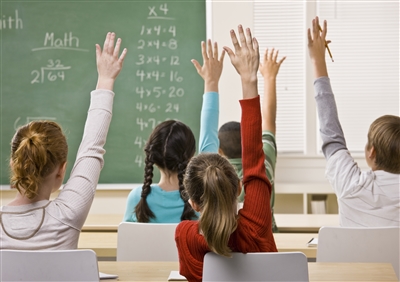Teaching equipment that`s now consigned to the history books

Teaching methods have of course altered dramatically over the centuries, but perhaps the last 50 years have marked the most significant changes in the classroom. Here are just a few things that our parents or grandparents might have seen in their schools, that are now just part of history.
1. The blackboard.
There was a time when the word `blackboard` was virtually synonymous with `classroom.` These were basically writing surfaces, upon which the teacher could affix text or drawings to help with their lessons. No styluses or even pens were used - instead a piece of calcium carbonate, or `chalk` as it was colloquially known, was scraped over the black surface, which used to be constructed out of slate, but eventually came to be made from a type of black plastic. By the late 1990`s most had been replaced by whiteboards, which could be written on with pens, and more easily cleaned, without making any clouds of dust.
2. The cane
The cane has almost become something of a mythical object - a disciplinary weapon, thankfully consigned to the history books. For decades, perhaps even centuries, it was the dread of schoolchildren. If you were caught misbehaving in class, you could expect to be struck across the hands with the fearsome thin wooden stick. Traditionally made from rattan, a tropical climbing plant, these rigid yet flexible objects could deliver quite a sting, especially when the teacher, for extra points perhaps, would aim to keep striking the same spot. By the 1970`s caning had been largely phased out in the UK, though I can recall being disciplined by teachers holding plimsoles as they would cudgels, in my secondary school in the early 1980`s.
3. The slide rule
Before schoolchildren had electronic calculators the slide rule was the hottest piece of portable number crunching technology available. Though it may look remarkably simplistic today, the slide rule is an analogue mechanical computer, capable of a formidable range of calculating applications. Though mainly used for multiplication and addition, it could also calculate exponents, roots, and be used for trigonometric computations.
4. The overhead projector
These devices were just being introduced when I left school in the mid 1990`s, and I remember being dazzled by this futuristic technology, that could beam out text or an image onto a screen, seemingly bringing a cinema into the classroom. The device was actually very simple, working along the same lines as a 35mm slide projector - light would be passed through a transparent sheet of plastic, then through a mirror and focusing lens, and finally onto a screen positioned a short distance away. The transparent sheet of plastic acted as the slide, and contained whatever information the teacher wanted to project. The advantage of this system over the blackboard was that the teacher could prepare many sheets in advance, and reuse them in future lessons. Once chalk is wiped from a board it is consigned to dust - sheets for an overhead projector however could be used again and again. Overhead projectors are still used in some schools, but they have largely been replaced by portable flatscreen monitors.
5. The school bell
The call to registration, the end of recess - these portentous events used to be announced by someone clanging a bell. In my primary school the end of breaks was always marked in this manner, and it was certainly not a sound we would have risked ignoring for a few extra minutes of playtime. Most schools these days have some kind of electric buzzer, which echoes down the corridors with the aid of loudspeakers, letting pupils know when it`s time to change classrooms or begin their breaks.
Who can say what the classroom of the future will look like? With children taking so naturally and instinctively to technology it`s certain that electronic learning aids will become ever more ubiquitous in schools. Since learning involves the moulding and shaping of the developing brains of children, perhaps devices will be developed to achieve this in the most efficient way possible, dramatically shortening the time required for a pupil to progress in mathematics, or learn to play a musical instrument. Whatever the future holds, it is the pupils of today that will bring us one step closer to it.

 Add a Comment
Add a Comment